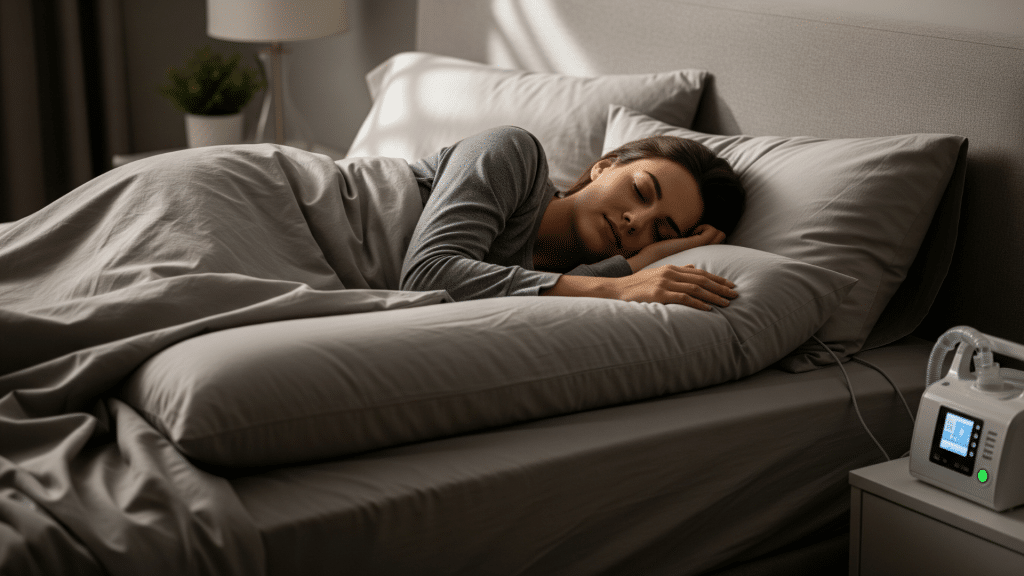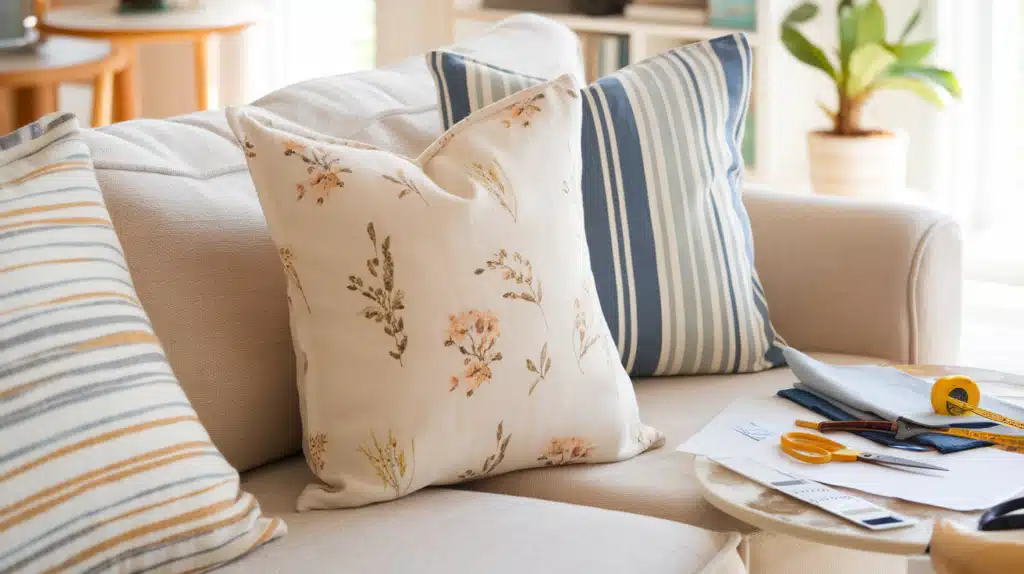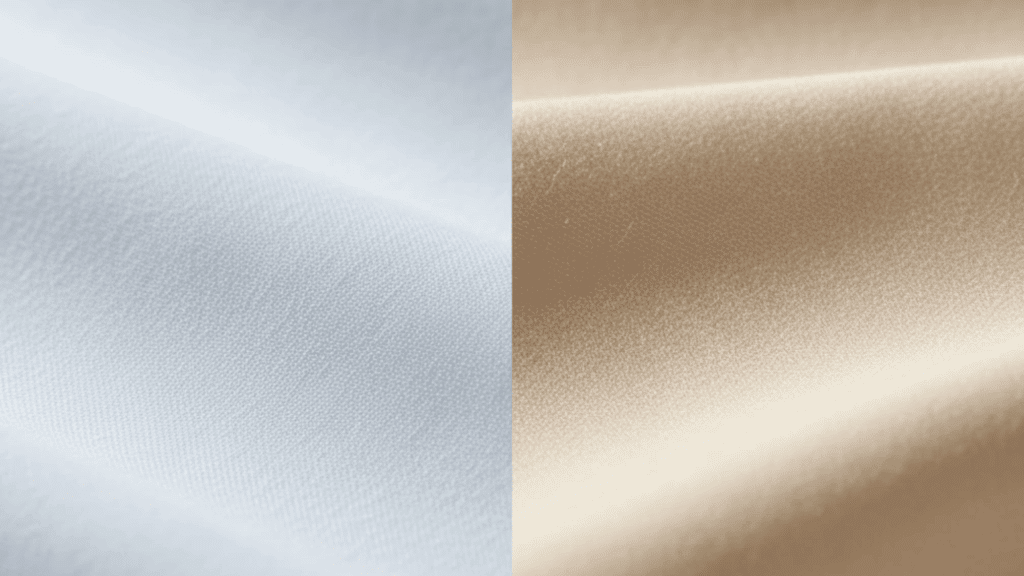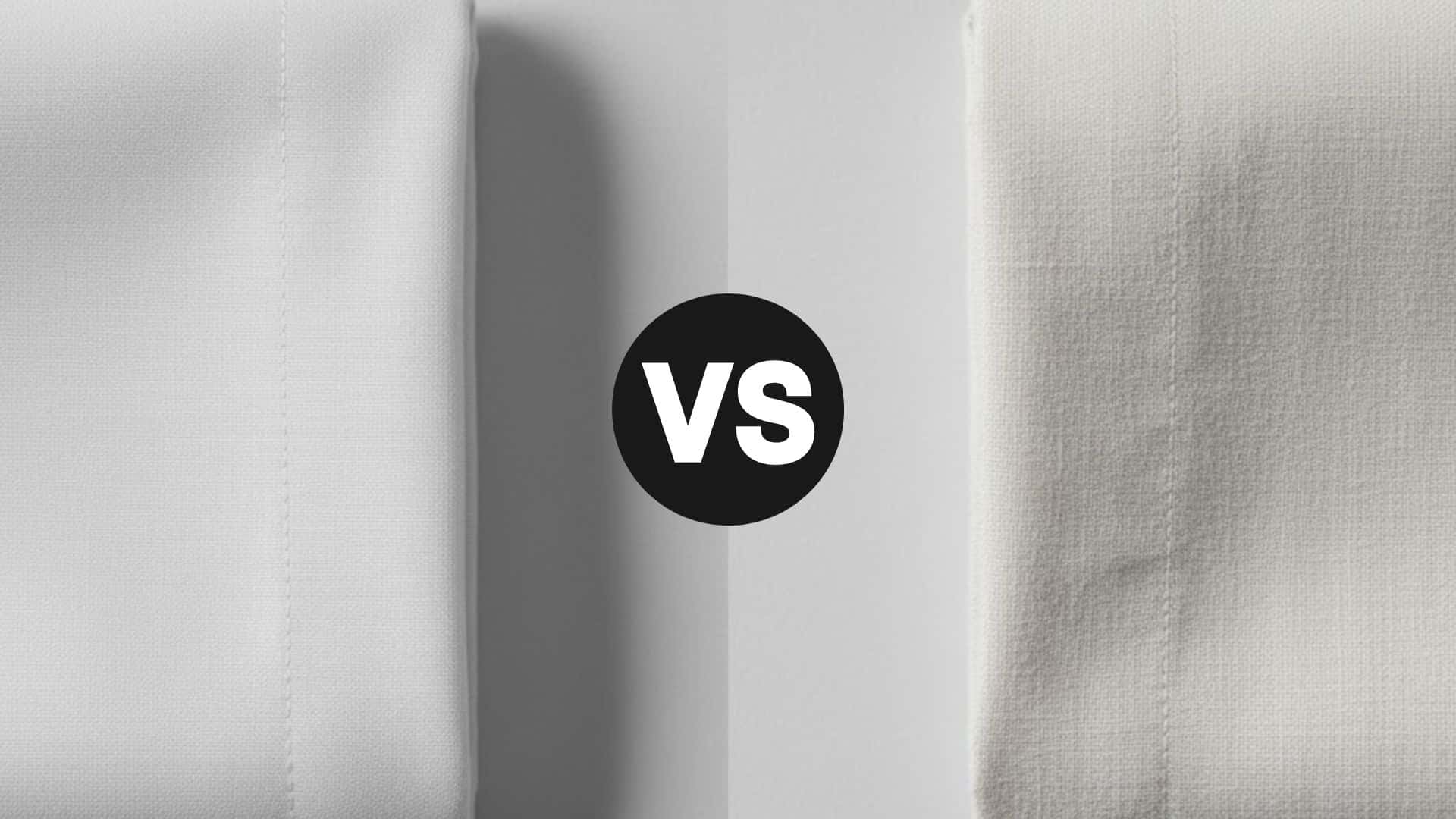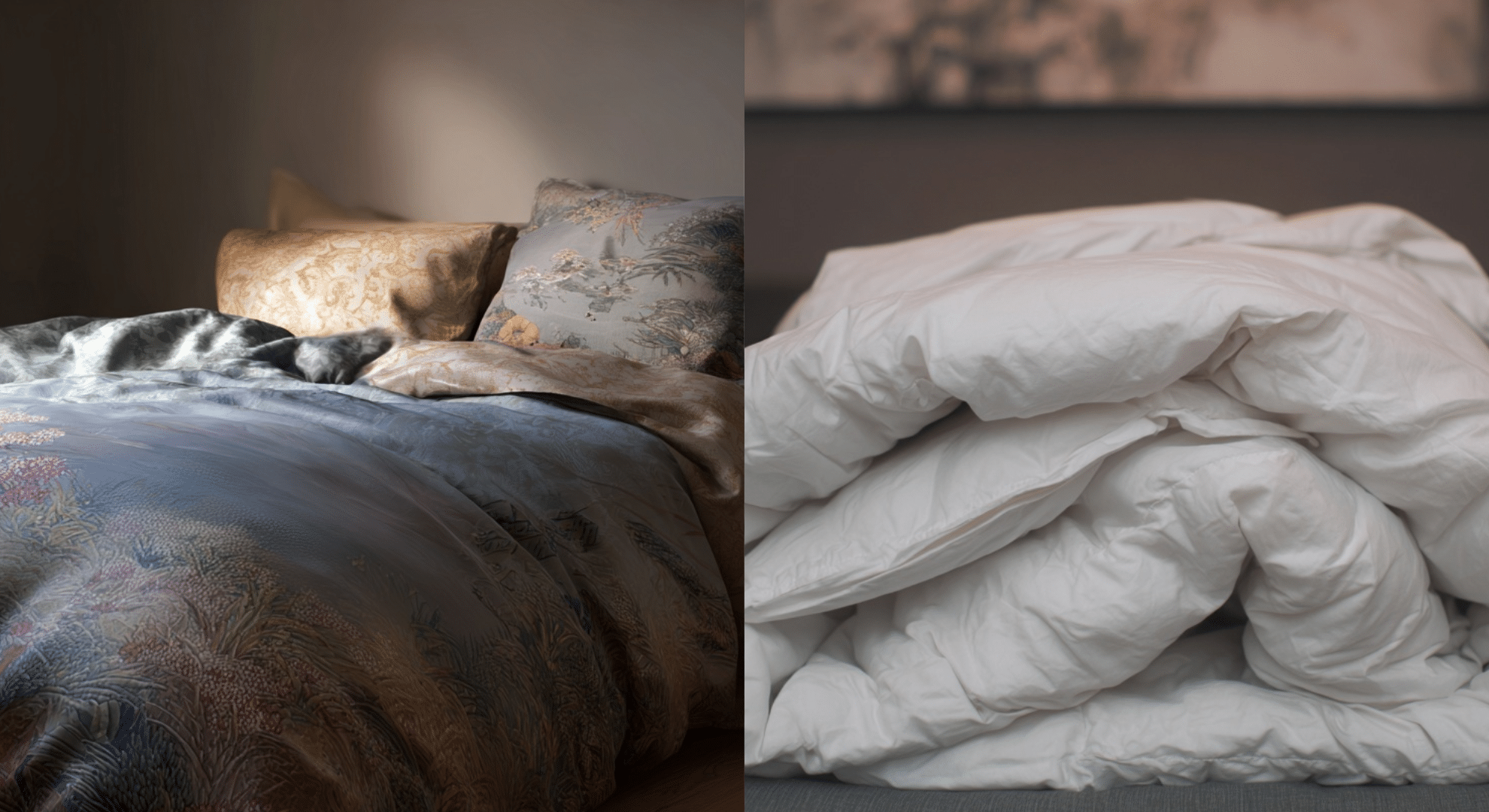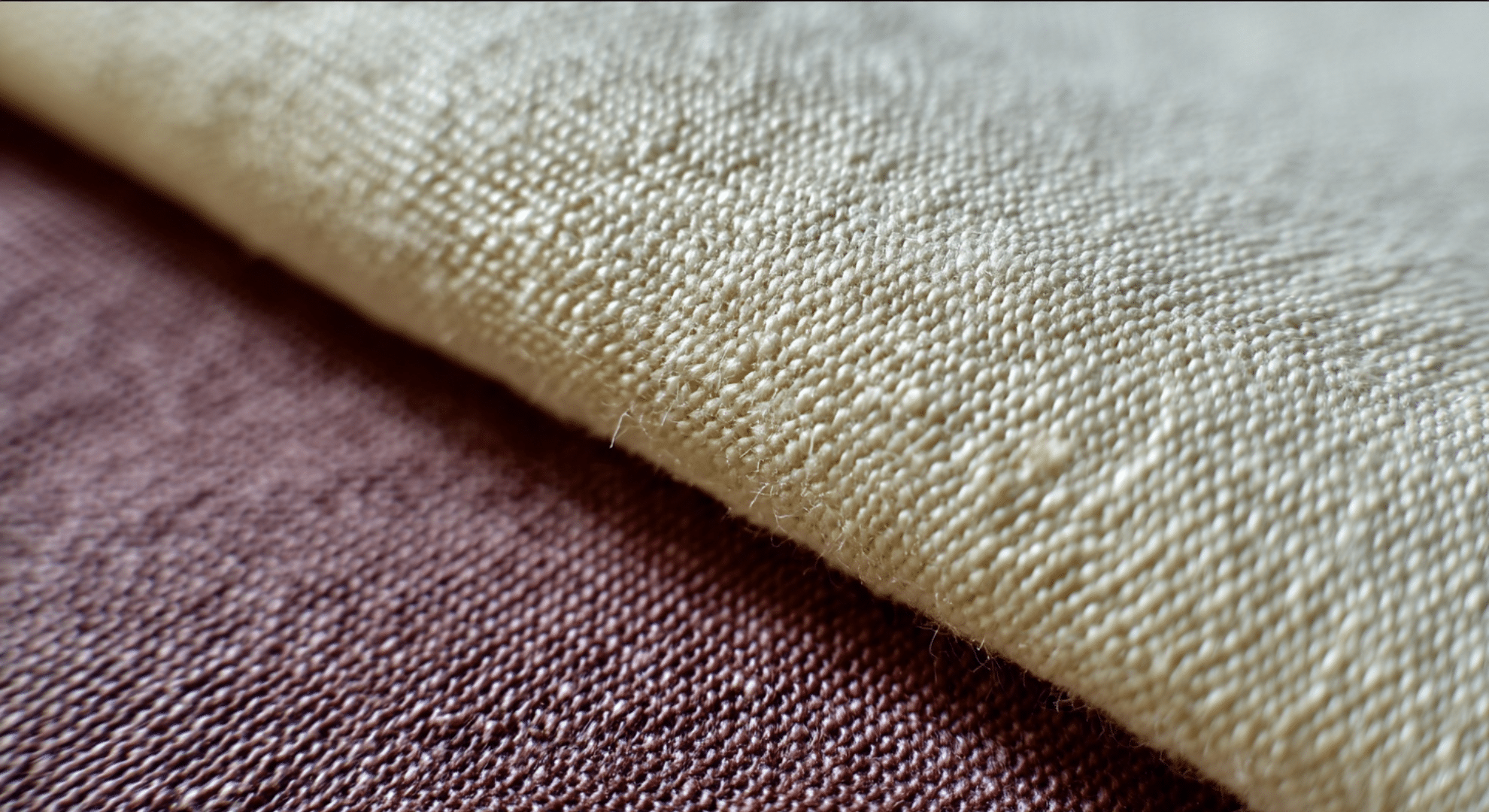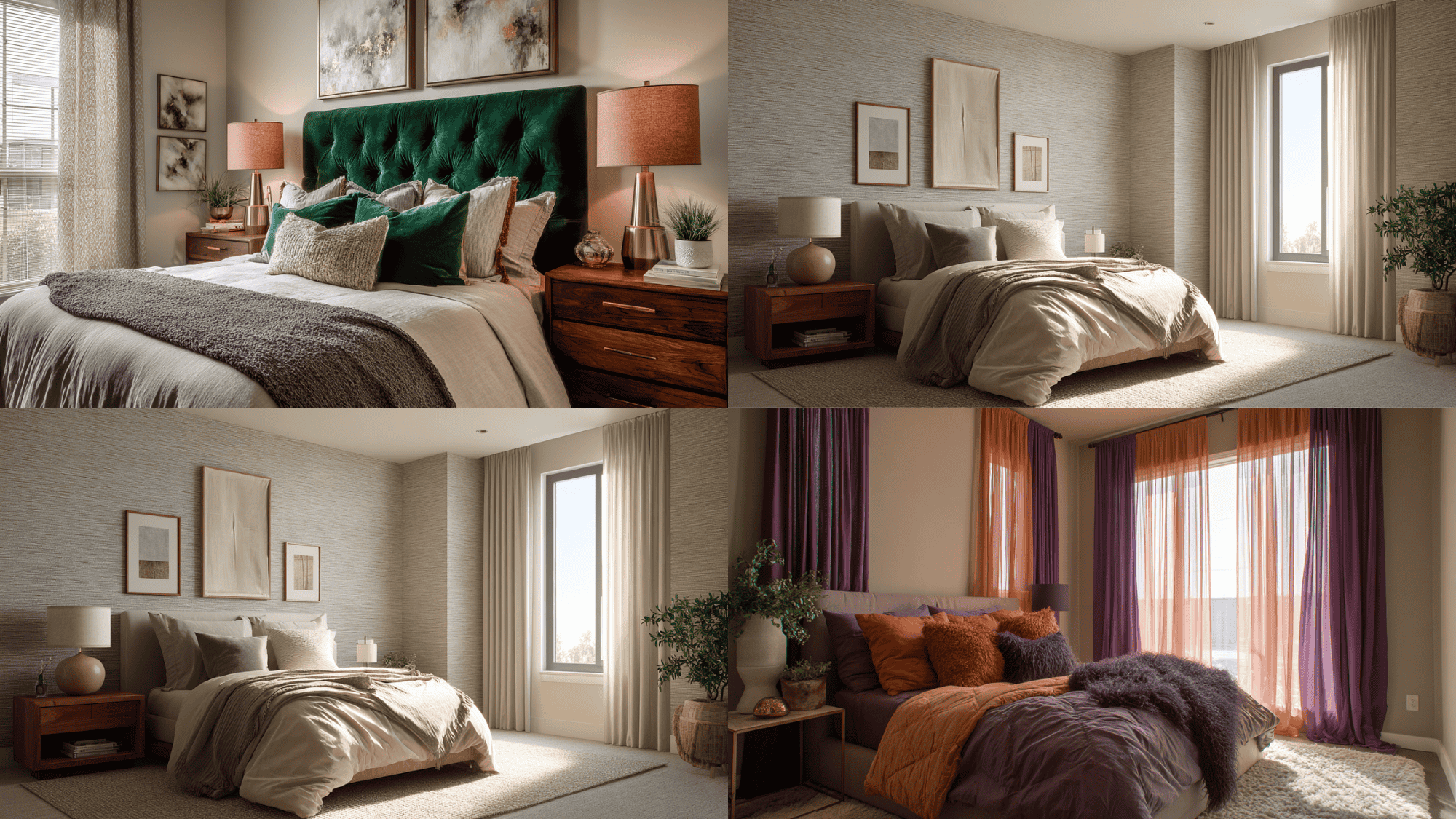It’s frustrating when sleep feels like a struggle every single night, even more so when your breathing keeps cutting out. If you’re dealing with sleep apnea, the way you sleep might be making things worse, or quietly helping.
Finding the best sleeping position for sleep apnea can reduce symptoms, ease snoring, and help you breathe more freely through the night.
You’ll see how different positions affect your airflow, which setups work best with CPAP, and how to train your body to stay in place. Want to make sleep a little easier tonight? Keep going.
Why Sleep Position Matters for Sleep Apnea
Your sleeping position plays a big role in how well you breathe at night. If you sleep on your back, gravity can pull your tongue and soft tissues backward, blocking your airway. That’s why sleep apnea often gets worse in this position.
Side sleeping, on the other hand, helps keep your airway more open by reducing that pressure. Your muscles also relax more during sleep, which can lead to more airway collapse if you’re not in the right position.
A better sleep position can make it easier to breathe and reduce how often your breathing stops at night.
How Sleep Position Affects Different Types of Sleep Apnea
There are two main types of sleep apnea, and your sleep position can affect each one differently.
Obstructive sleep apnea (OSA) happens when your airway gets blocked by soft tissues, like your tongue or throat muscles, while you sleep. This is the more common type, and it’s strongly influenced by how you sleep.
Lying on your back usually makes it worse, while side sleeping often helps keep the airway open.
Central sleep apnea (CSA) is different. It’s not caused by a blockage but by the brain failing to signal the body to breathe. Because CSA isn’t related to airway position, changing your sleeping posture doesn’t help as much.
However, raising your head slightly or using supportive pillows may improve comfort or reduce other symptoms. If you’re not sure which type you have, a sleep study can help. Most people with OSA benefit the most from side sleeping.
Best Sleeping Position for Sleep Apnea
Some sleep positions make breathing easier, while others can make apnea worse. If you’re trying to figure out the best position to sleep with sleep apnea, here’s how each one compares.
1. Side Sleeping (Left and Right)
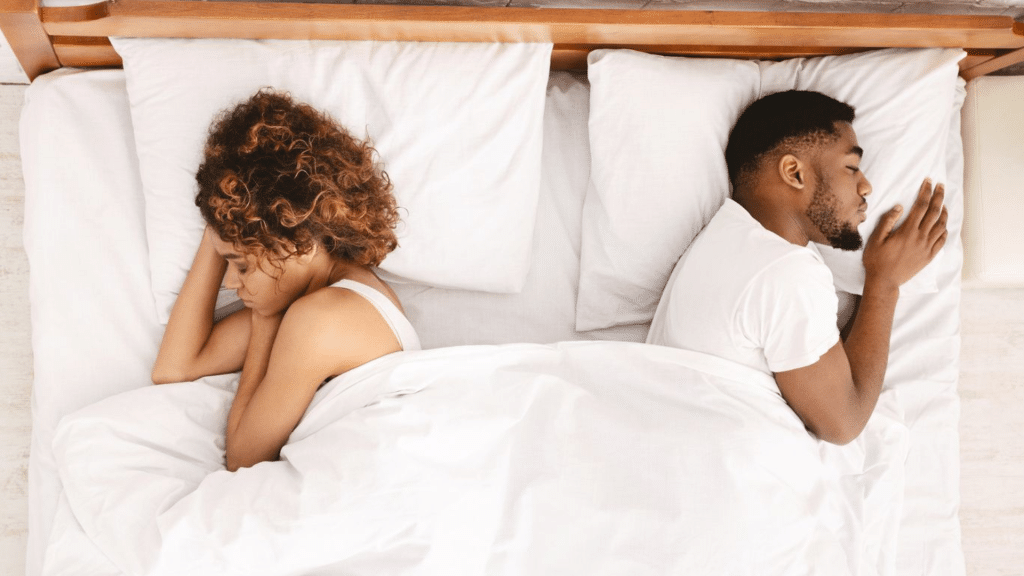
Side sleeping is often the best choice for people with sleep apnea, especially obstructive sleep apnea. This position helps keep the airway open by preventing the tongue and soft tissues from falling backward. It also reduces snoring and improves airflow.
Many people find sleeping on the left side even more helpful, especially if they also deal with acid reflux. Side sleeping supports better oxygen levels and is usually more comfortable for long-term sleep. For most people, this is the top recommendation.
2. Stomach Sleeping
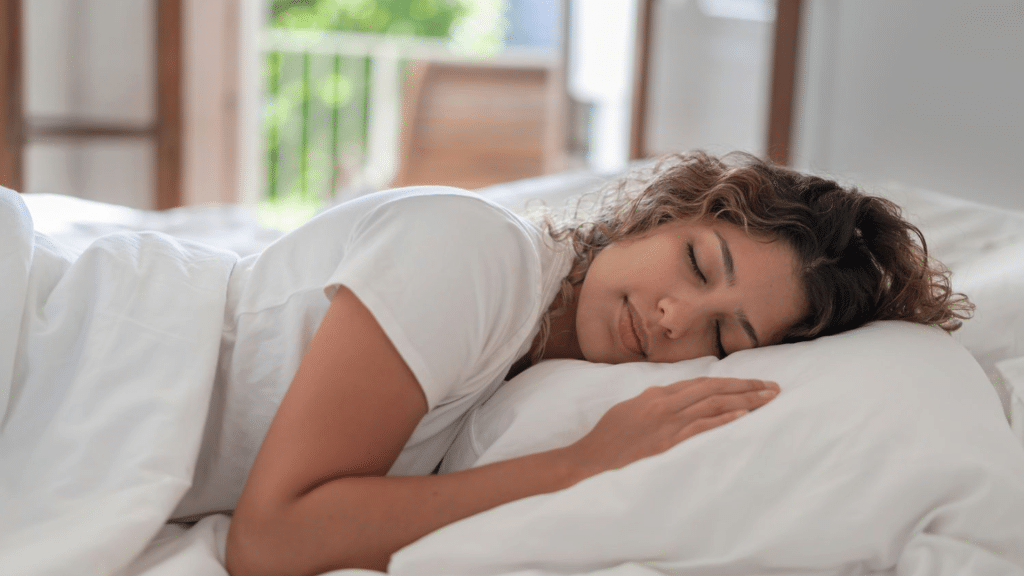
Stomach sleeping can sometimes help reduce snoring and mild apnea symptoms, but it’s not ideal for everyone. While it may keep the airway open, it can put stress on your neck and spine.
Turning your head to the side for hours can lead to discomfort or stiffness. This position doesn’t do much to help with central sleep apnea. If you try stomach sleeping, make sure your pillow is low and your neck stays in a neutral position.
3. Back Position (Fowler’s)

This position involves lying on your back with your upper body raised using a wedge pillow or adjustable bed. It’s helpful for people who struggle to sleep on their side. Improving the head and chest can reduce pressure on the airway and improve airflow.
It’s especially useful if you have nasal congestion or acid reflux. While it’s not as effective as side sleeping, it’s a better option than lying flat on your back.
4. Back Sleeping
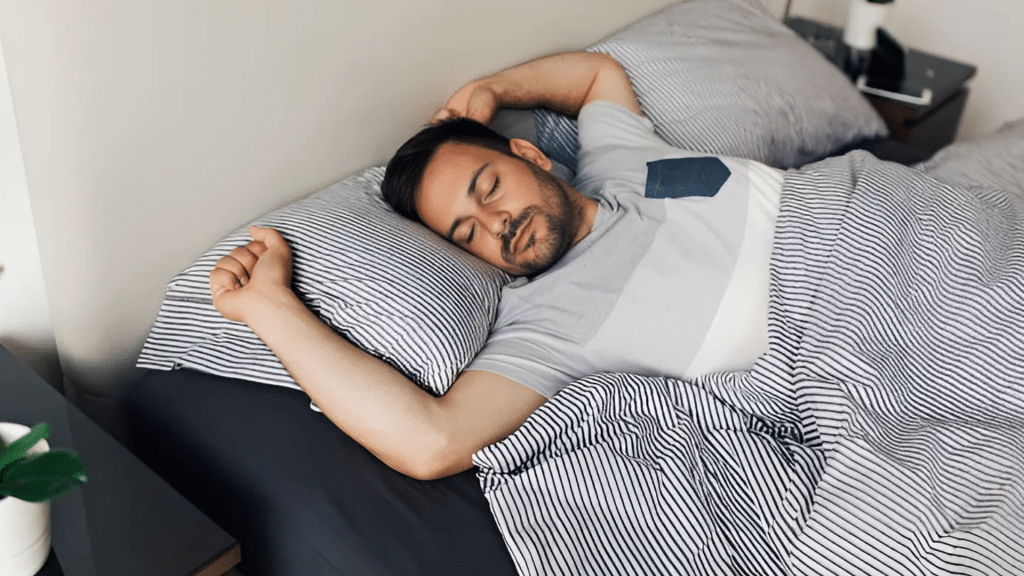
Back sleeping is the worst position for most people with obstructive sleep apnea. Gravity pulls the tongue and soft tissues backward, which can block the airway and cause more frequent breathing interruptions. It also tends to make snoring louder.
If you have central sleep apnea, this position might not be as harmful, but it usually still causes poor sleep quality. Back sleeping is best avoided unless no other position works for you.
Sleeping Position Tips
If you use a CPAP machine, your sleep position can affect comfort, mask fit, and how well your therapy works.
- Side sleeping is usually best for CPAP users. It keeps the airway open and makes it easier to keep a proper mask seal.
- Use a CPAP-friendly pillow with side cutouts to reduce pressure on the mask and prevent leaks.
- Keep the hose above your head using a hose hanger or clip to avoid pulling or twisting during movement.
- Full-face masks work better when lying on your back, showing slightly improved results. They may shift during side sleeping without proper support.
- Nasal masks and nasal pillows stay in place more easily when side sleeping and are often more comfortable for active sleepers.
- Secure the hose loosely to prevent it from tugging if you roll over. This helps avoid waking up or breaking the mask seal.
How to Train Yourself to Sleep on Your Side
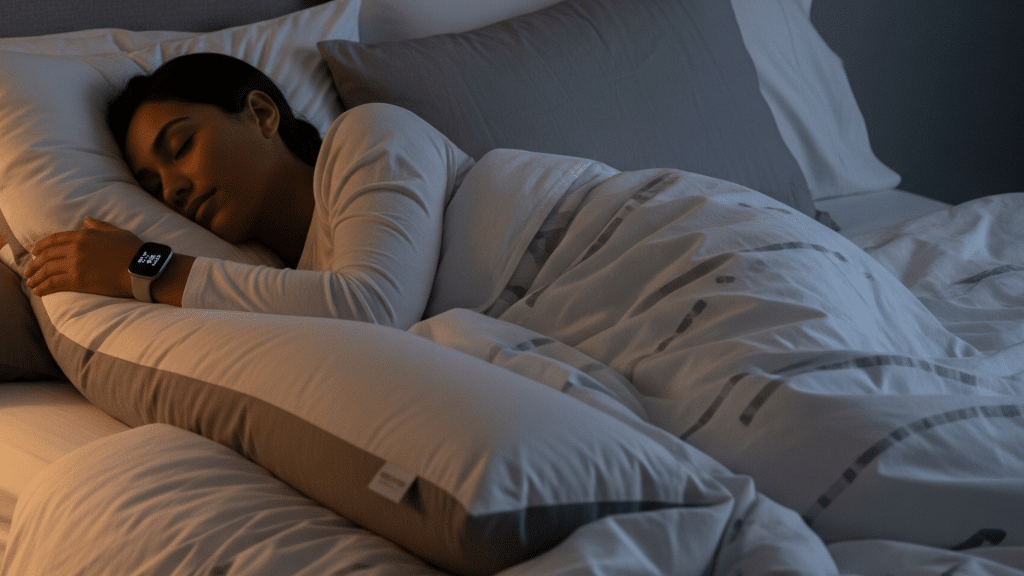
If side sleeping doesn’t come naturally to you, a few simple strategies can help you stay in that position all night.
Using Body Pillows or Positioners
A full-length body pillow can provide a comfortable surface for you to lean into, helping your body stay aligned on its side. Some people also place a firm pillow behind their back to prevent rolling.
There are special wedge pillows and sleep positioners designed just for this purpose. They create a barrier that keeps you from turning onto your back while still being comfortable enough for a good night’s sleep.
Preventing Back Rolls During Sleep
To avoid rolling onto your back, try sewing a tennis ball or foam pad into the back of your pajama top. The discomfort makes it less likely you’ll stay on your back while asleep. Another method is to use pillows behind you as a barrier.
Some people also wear a small backpack while sleeping to keep it in place. These simple tricks can train your body to prefer side sleeping over time.
Night Routine Twist
Training your body to sleep differently starts with small habit changes. Try going to bed at the same time each night and lying down on your side right away. Use a sleep tracking app to monitor your positions and get reminders.
Some apps can even vibrate when they detect you’ve rolled onto your back. Sticking with a steady routine will help your body adjust and eventually stay on your side naturally.
Best Pillows for Sleep Apnea by Position
The right pillow can make your sleep position more effective and comfortable if you’re managing sleep apnea symptoms every night.
CPAP-Compatible Pillows
CPAP-compatible pillows are designed with cutouts or dips on the sides to accommodate CPAP masks and hoses. They reduce mask pressure and help prevent leaks while keeping your neck supported.
If you use a CPAP machine, switching to one of these pillows can make side sleeping more comfortable and help you stick with your therapy longer.
Wedge Pillows for Improving Sleeping
Wedge pillows lift your upper body to help keep your airway open, especially if you can’t sleep on your side. They’re also good for reducing acid reflux. Look for a wedge with a gradual incline and firm support.
Many people use these while lying on their backs in a slightly upright position. They’re helpful but not always the most comfortable for long-term use.
Cervical Support for Side and Stomach Sleepers
Cervical pillows are shaped to support the curve of your neck and help with alignment. For side sleepers, they keep the head level with the spine.
For stomach sleepers, a low-profile version prevents overextension of the neck. These pillows can reduce tension and help you stay in your chosen sleep position longer. Choose one based on firmness and your shoulder or neck size.
Pros and Cons for Each Pillow Type
Choosing the right pillow depends on how you sleep and whether you use a CPAP machine. Here’s a quick comparison:
| Pillow Type | Pros | Cons |
|---|---|---|
| CPAP Pillows | Reduces mask leaks, improves comfort for side sleepers | Not useful for non-CPAP users |
| Wedge Pillows | Elevates the upper body, helps with reflux, and mild apnea | It can feel too steep or uncomfortable for some |
| Cervical Pillows | Supports neck alignment, works well for side/stomach sleep | May not fit all body types or pillow preferences |
Your best pick depends on your sleep position, comfort level, and whether you use CPAP. Try different styles to find the one that fits you best.
Adjusting Sleep Position for Other Health Conditions
Some health issues can affect how you sleep, especially when you’re also managing sleep apnea. Small changes can make a big difference.
- GERD or Acid Reflux: Sleep on your left side or raise your upper body slightly to reduce acid backing up into your throat.
- Back or Neck Pain: Use a supportive pillow to keep your spine straight while side sleeping and avoid extra strain.
- Pregnancy: Lying on your left side supports circulation and takes pressure off key organs and your airway.
- Sinus Congestion: Slightly improve your head to help sinuses drain better and ease nighttime breathing issues
Conclusion
By now, you should have a clearer idea of the best sleeping position for sleep apnea and how it can make a difference.
Side sleeping, a better pillow, or a slight head lift might help you breathe more easily and sleep more soundly. It’s not about getting it perfect, just finding what works best for you.
If you’re still having trouble at night, talk with your doctor about other options. You can also check more of my blogs for simple tips on sleep habits and nighttime comfort. Ready to make sleep easier, one night at a time.


